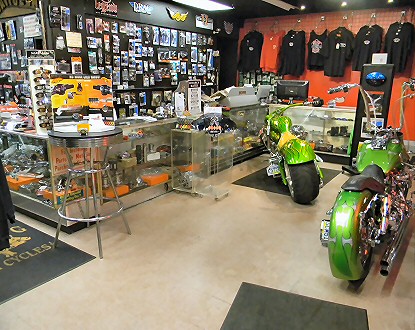Understanding Motorcycle Gears: Exactly How to Enhance Your Riding Experience
In the realm of motorcycling, mastering the art of equipment manipulation is crucial for boosting your riding performance. Correctly using and understanding motorbike equipments can substantially affect fuel, control, and acceleration performance, transforming a typical ride into a seamless, electrifying trip.
Comprehending Equipment Mechanics
At the core of motorcycle characteristics, gear mechanics play a pivotal duty in converting engine power into activity, eventually dictating rate and control. The equipment ratios, meticulously created, figure out the relationship in between engine transformations and wheel turns, influencing acceleration and fuel performance.
Recognizing gear mechanics starts with recognizing the relevance of the transmission, which houses multiple equipments of differing sizes. These gears connect through a process recognized as meshing, where teeth of different gears involve to send power.
Furthermore, the principle of equipment shifting is essential to maximizing performance. Prompt and smooth changes ensure that the engine operates within its optimum power band, preventing unnecessary stress and improving durability (mx parts nz). By understanding these mechanical complexities, bikers can attain a harmonious mix of control, effectiveness, and power, elevating their riding experience
Timing Your Changes
Shift timing mastery is necessary for enhancing bike efficiency and boosting the riding experience. Appropriately timed shifts guarantee that the engine runs within its ideal power band, which is crucial for preserving control, achieving smooth velocity, and guaranteeing the longevity of the bike. Cyclists should establish an intuitive feeling of when to change gears, which entails recognizing the connection in between engine transformations per minute (RPM) and rate.
To master shift timing, pay attention to the engine's noise and feel, as these give essential clues about when to transform gears. The suitable shift factor generally happens when the engine approaches the top series of its power band without reaching the redline. Shifting also early can cause a lack of power, while shifting as well late may trigger unnecessary engine strain
Additionally, roadway problems and riding style influence shift timing. In contrast, during highway riding, less changes at higher rates can be more ideal.
Enhancing Fuel Performance
While understanding motorcycle gears is important for efficiency, boosting gas effectiveness is equally vital for both economic and ecological reasons. Optimum gas intake not only lowers functional expenses yet additionally minimizes the environmental footprint of riding. To accomplish this, one need to comprehend the complex connection between equipment choice and engine performance.
Riding in a higher equipment at reduced rates can lead to engine hauling, which is damaging to both fuel economic situation and engine health and wellness. Conversely, riding in lower equipments at high speeds results in unnecessary fuel consumption.
Furthermore, normal maintenance plays a pivotal role in fuel efficiency. Ensuring that the motorcycle is well-tuned, with tidy air filters and appropriately inflated tires, can reduce and boost aerodynamics fuel wastefulness. Additionally, embracing a riding style that welcomes gradual velocity and smooth deceleration can add to much better fuel economic situation.

Techniques for Smooth Transitions
Attaining smooth equipment transitions is basic to improving the riding experience and ensuring the durability of a motorcycle's transmission system. Appropriate equipment shifting not just contributes to a seamless adventure but additionally minimizes deterioration on the mechanical parts. To master the art of smooth shifts, riders need to concentrate on a few crucial strategies.

Second of all, clutch control plays a pivotal role. Engaging and disengaging the clutch smoothly needs method. The clutch bar must be launched progressively, enabling a smooth transfer of power from the engine to the wheels without creating a shock or sudden activity.

Adapting to Road Problems
Browsing varied road conditions is a crucial skill for any kind of motorcyclist intending to preserve control and security. Whether you're riding on wet surfaces, crushed rock roadways, or browsing sharp turns, your ability to adjust your equipment use and riding method is paramount. Understanding just how to change your gears suitably can substantially affect traction and security, making sure a much safer journey.
In comparison, when riding on gravel or unequal terrain, lower equipments are more suitable. Reduced gears supply better control and allow you to react more promptly to unexpected modifications in the roadway surface.
Sharp contours require accurate equipment monitoring to balance rate and control. Downshifting prior to entering a curve can click over here aid maintain momentum while making certain the motorcycle stays secure throughout the turn. Consistent method in diverse problems enhances your capability to forecast and respond to adjustments in roadway appearance and incline.
Verdict
Mastering motorcycle gears significantly enhances the riding experience by boosting fuel, control, and velocity efficiency. Adapting equipment choice to different road problems, such as making use of higher gears on damp surface areas and lower equipments on crushed rock, additional enhances handling and safety and security.
Recognizing gear mechanics starts with acknowledging the importance of the gearbox, which houses numerous gears of varying dimensions. These gears interact via a process recognized as meshing, where teeth of various gears involve to transfer power (motorcycle shop). Mild adjustments to the throttle throughout gear changes can avoid jerky movements and preserve a consistent riding rate
Whether you're riding on wet surface areas, gravel roadways, or navigating sharp turns, your capacity to adapt your equipment usage and riding method is paramount. Adjusting gear choice to various visit this page road problems, such as utilizing greater gears on damp surface areas and lower equipments on gravel, additional boosts handling and security.